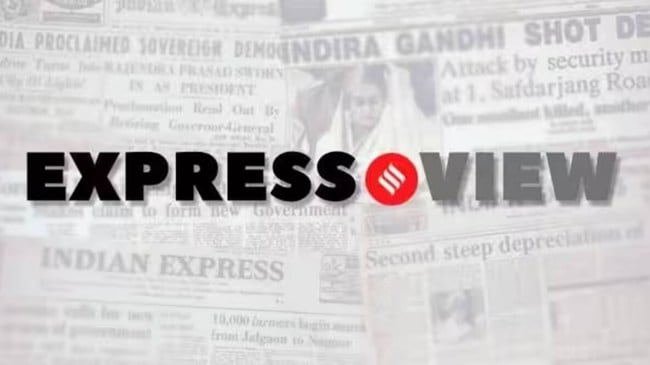Opinion Express View on report on state finances: Roadmaps needed
Despite an overall improvement in recent years, state debt remains well above levels suggested by the FRBM review committee. Detailed planning for fiscal consolidation is the need of the hour.
 Last year's Economic Survey pointed out that the gap between class standards and learning levels has widened since the pandemic
Last year's Economic Survey pointed out that the gap between class standards and learning levels has widened since the pandemic The debt-deficit dynamics of state governments had worsened during the pandemic. Their debt to GDP ratio had, for instance, surged from 25.3 per cent in 2019 to 31 per cent in 2021. Subsequently, with states staying on the path of prudence, they witnessed a steady improvement across various metrics. As per the RBI’s most recent state finances report, states managed to bring down their debt to GDP ratio to 28.5 per cent in 2024. However, there is considerable variation across regions. For instance, the debt to GSDP ratio for Odisha and Gujarat is as low as 16.3 per cent and 17.9 per cent respectively. In comparison, in the case of Punjab, it is as high as 46.6 per cent. Considering this marked divergence, as well as the multiplicity of parameters that can be used to gauge a state’s fiscal health, there is a need for a framework that not only helps provide an overall assessment of the fiscal position of all states, but also allows for comparisons to be drawn. A few days ago, the Niti Aayog released a report which attempts to put forth such a structure.
The report has created a Fiscal Health Index, a framework for assessing the fiscal position of states across several parameters. The index, which covers 18 major states, is based on five sub-indices — fiscal prudence, debt index and sustainability, revenue mobilisation and quality of spending. This allows for not only assessing the performance of states across various indicators, but also identifying the areas for improvement, and can perhaps help promote best practices. As per the index, the top five performing states are Odisha, Chhattisgarh, Goa, Jharkhand and Gujarat, while the states of Punjab, Andhra Pradesh, West Bengal, Kerala and Haryana rank at the bottom. In 2022, economists at the RBI had also attempted such a study. They had identified Bihar, Kerala, Punjab, Rajasthan and West Bengal as “highly stressed”.
Despite an overall improvement in recent years, state debt remains well above levels suggested by the FRBM review committee. State government finances also face several risks. The RBI study had identified loss-making power distribution companies, the growing inclination for “freebies” and realisation of guarantees, among others, as areas of concern. This is so especially for the more indebted states. For instance, the Niti Aayog report says that states like West Bengal and Punjab have seen increasing debt to GSDP ratios, “raising serious concerns about debt sustainability”. It adds that “high persistent deficits and varying fiscal performances among states underscore the urgency for reform and targeted interventions”. In such a scenario, it would be advisable to draw up detailed roadmaps for bringing down debt in a time-bound manner, especially for states with high levels.




